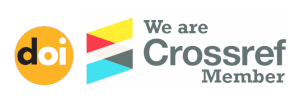INTEGRATION OF FLIPPED CLASSROOM MODEL IN TEACHER EDUCATION PROGRAMME
Keywords:
Flipped Classroom,, Teacher Education, Pedagogical skills, 21st Century TeachingAbstract
Modern education requires new teaching methods that promote active learning, critical thinking, and digital literacy, as traditional approaches are insufficient to engage today's learners. The Flipped Classroom Model offers educators a chance to prepare for 21st-century classrooms by fostering active learning, integrating technology, and adopting a more student-centered pedagogy, wherein content is delivered outside the classroom and classroom time is utilized for interactive activities. The analysis aims to emphasize the integration of flipped classrooms in teacher education programs, the benefits of this model for student involvement, and evaluate the challenges faced by pre-service educators during the implementation of the flipped classroom approach. The researcher employed an exploratory research methodology and conducted a field survey to ascertain trainee instructors' perceptions and experiences of the flipped classroom idea in teacher education. The study participants were individuals who have experienced flipped classroom instruction as students or trainees. The research indicates that flipped classroom training improves pedagogical competence, technological skills, and the readiness of pre-service teachers for contemporary teaching, as facilitated by a structured curriculum and digital technology. It fosters engagement, direct instruction, personal reflection, and learner-centered pedagogy. The challenges include digital inequalities, faculty resistance, workload demands, and institutional obstacles. The study concludes that the flipped classroom model is a technology-driven strategy that cultivates essential pedagogical and digital competences in pre-service teachers, so preparing them for 21st-century teaching.
Downloads
References
Bergmann, J., & Sams, A. (2012). Flip Your Classroom: Reach Every Student in Every Class Every Day (pp. 120-190). Washington DC: International Society for Technology in Education.
Best, J.W., Kahn, J.V. (2006). Research in education(pp. 253). New Delhi: Prentice Hall of India Pvt. Ltd.
Boyraz, S., & Ocak, G. (2017). Implementation of flipped education into the Turkish EFL teaching context. Journal of Language and Linguistic Studies, 13(2), 426-439.
Braun, V., & Clarke, V. (2006). Using thematic analysis in psychology. Qualitative Research in Psychology, 3(2), 77-101. https://doi.org/10.1191/1478088706qp063oa
Cetin Koroglu, Z., & Cakir, A. (2017). Implementation of flipped instruction in language classrooms: An alternative way to develop speaking skills of pre-service English language teachers. International Journal of Education and Development Using Information and Communication Technology, 13(2), 42–55.
Cohen, L., Manion, L., & Morrison, K. (2011). Research methods in education (7th ed.). Routledge.
Ekmekci, E. (2017). The flipped writing classroom in the Turkish EFL context: A comparative study on a new model. Turkish Online Journal of Distance Education, 18(2), 151–167.
Huang, Y. N., & Hong, Z. R. (2016). The effects of a flipped English classroom intervention on students’ information and communication technology and English reading comprehension. Educational Technology Research and Development, 64(2), 175–193.
Kahu, E. R. (2013). Framing student engagement in higher education. Studies in Higher Education, 38(5), 758–773. https://doi.org/10.1080/03075079.2011.598505
Keskin, D. (2023). Implementation of flipped model in EFL reading classrooms. Turkish Online Journal of Distance Education, 24(3), 261–276.
Lai, C.-L., & Hwang, G.-J. (2016). A self-regulated flipped classroom approach to improving students’ learning performance in a mathematics course. Computer & Education, 100, 126–140. https://doi.org/10.1016/j.compedu.2016.05.006
Marshall, C., & Rossman, C. B. (1999). Designing qualitative research (3rd ed.). Thousand Oaks, CA: Sage.
Plešec Gasparič, R., Valenčič Zuljan, M., & Kalin, J. (2020). Flipped learning and teaching as an opportunity for innovative and flexible implementation of student groupings in higher education. Journal of Elementary Education, 13, 51–80. https://doi.org/10.18690/rei.13.Spec.Iss.5-80.2020
Ray, S., & Sikdar, D. P. (2024).Comparative Analysis of Flipped Classroom Implementation in Western and Indian Indoctrination. American Journal of Arts and Human Science, 3(4) 63-71. https://doi.org/10.54536/ajahs.v3i4.3638
Srinivasan, S., & Kumar, H. (2020). Flipped classroom model: A possibility in the Indian higher education system. Journal of Critical Reviews, 7(15), 1486–1490. https://www.jcreview.com/admin/Uploads/Files/61db60a97cce75.56589604.pdf
Wang, K., & Zhu, C. (2019). MOOC-based flipped learning in higher education: Students’ participation, experience, and learning performance. International Journal of Educational Technologies in Higher Education, 16, 33. https://doi.org/10.1186/s41239-019-0163-0
Yu, Z., & Wang, G. (2016). Academic achievements and satisfaction of the clicker-aided flipped business English writing class. Educational Technology & Society, 19(2), 298–310.
Published on: 17-08-2025
Also Available On
How to Cite
Issue
Section
License
Copyright (c) 2025 Suvendu Ray, Debjani Guha

This work is licensed under a Creative Commons Attribution 4.0 International License.
Authors contributing to this journal retain the copyright of their articles but agree to publish their articles under the terms of the Creative Commons CC-BY 4.0 License (http://creativecommons.org/licenses/by/4.0/) allowing third parties to copy and redistribute the material in any medium or format, and to remix, transform, and build upon the material, for any purpose, even commercially, under the condition that appropriate credit is given, that a link to the license is provided, and that they indicate if changes were made. They may do so in any reasonable manner, but not in any way that suggests the licensor endorses them or their use.


